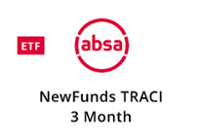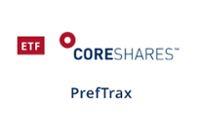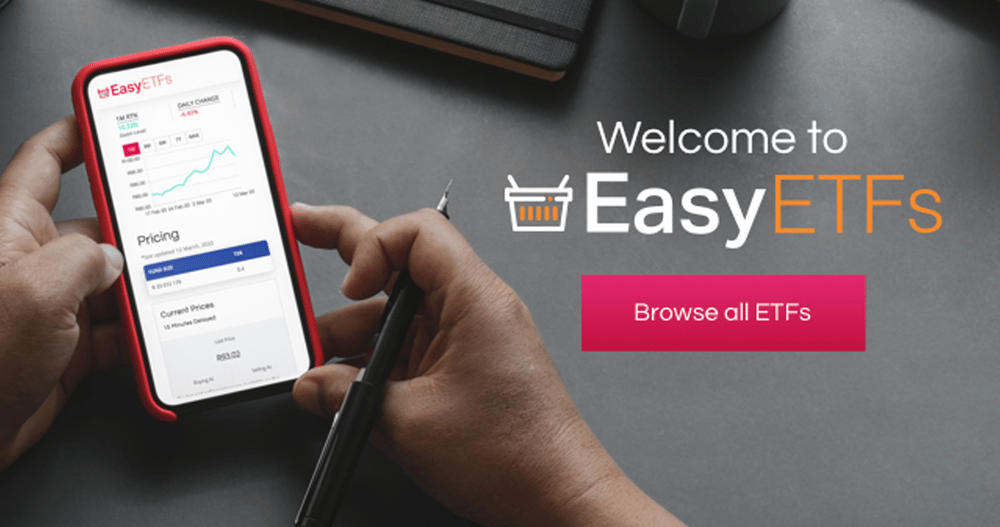This ETF Portfolio is Lit!
Intellidex ETF Picks
Not only should ESG funds and Exchange Traded Funds (ETFs) be heating up your portfolio, but your TFSA account should also be celebrating some upside since the start of the year.
Here are some of the “Hot ETFs” at Intellidex where diversification is still top of the pops.
What’s happening in the markets?
From a JSE-listed ETF perspective, the two major themes that pushed and pulled against each other in July were, surprisingly, China and mining/resources companies – against the backdrop of disturbing civil unrest and spiking Covid-19 cases.
A better reflection of the on-the-ground realities, is, however, the 1.5% retreat of the small-cap index, which houses mostly SA-focused companies. Furthermore, the Absa Purchasing Managers’ Index (PMI), which had been holding above water for several months, sank in July to 43.5 points from 57.4 in June, signalling the steepest deterioration in business conditions since May 2020.
The best-performing ETF, the Satrix RESI, climbed 11.34% in July following mouth-watering results from several mining groups. At the other extreme, the Satrix China ETF dived 11.2% on the back of a regulatory scare from the Chinese authorities.
Globally, equities, as measured by the MSCI world index, increased 1.7% while a Barclays composite measure of global bonds edged up 1.3%. Locally, the Top 40 Index rose 4.5% with the strong performance from miners partially offset by Naspers/ Prosus.
Intellidex’s favourite ETFs
Domestic equity:
CoreShares Top 50 ETF (CTOP50)
The JSE large-cap index is dominated by Naspers/ Prosus. For instance, the weight of Naspers in the popular Satrix 40 ETF was 17.1% at the end-June compared with 10.4% in the CoreShares Top 50. The underperformance of Naspers has dragged down most uncapped vanilla ETFs such as the Satrix 40, given that Naspers, with the Chinese tech giant Tencent as its biggest asset, has performed poorly relative to the market this year. With the Chinese authorities cracking the whip on various sectors of its economy, it has hurt sentiment and valuations. In tandem, Naspers’ performance has worsened.
While China remains a strategically sound investment destination, the risk of investing in China has increased and is likely to stay elevated for the foreseeable future as there are rumours of further interference by the Chinese authorities in the workings of the economy. To reduce this risk, buying an ETF that reduces exposure to Naspers makes sense. This is where the CoreShares Top 50 ETF (+4.3% in July) comes in, as it caps the weight of Naspers at 10% of the fund. Also, because it invests in 50 companies rather than 40, it has better diversification, reducing concentration risk. The ETF can be used to form a core equity part of your overall portfolio. With the growing influence of mining houses in the fund, you will gain exposure to the prevailing high commodity prices. While there is reason to worry that commodity prices will come down, tailwinds still remain from global expansionary economic policies. More recently, the $650bn in SDR from the IMF for the developing world will add to the global growth impetus.
The beauty of the fund is that there are other sector exposures such as financials and consumer goods that bring further diversification.
Foreign equity:
Sygnia Itrix S&P Global 1200 ESG ETF (SYGESG)
The young Sygnia S&P Global 1200 ESG fund (July +3.9%), which comes with a decent price tag of 0.35%, down weights companies that score lowly on ESG and up weights those with better ESG metrics. As sustainability becomes more entrenched globally, it is only natural that investing is following suit, and it seems we are just at the beginning of this secular trend with companies on the right side of ESG likely to attract capital and hence outperform peers for the foreseeable future. What’s more, an increasing chunk of the global fiscus earmarked to fight the Covid-19 downturn has some ESG targets.
This is the most diversified ESG fund listed on the JSE. It tracks the S&P Global 1200 ESG index, a subset of the S&P Global 1200 index, designed to measure the performance of securities meeting sustainability criteria while maintaining the same overall industry group weights as the S&P Global 1200 index. With the S&P Global 1200 index as its universe, the ESG index excludes companies that score low on United Nations Global Compact and S&P DJI ESG scores. Excluded companies are those that generate a considerable amount of revenue from coal, tobacco and weapons. After the screening, the ESG index contains roughly 63% of the S&P Global 1200 index constituents.
Cloud Atlas AMI Big50 ex-SA ETF (AMIB50)
Keeping with the theme of de-risking from China but maintaining exposure to potentially high growth (and consequently high risk) offshore investments, we make a bold foray into Africa, excluding SA. Cloud Atlas 50 (+1.6%) invests exclusively in Africa, outside of SA, where most markets are fledgling and have different risk characteristics to larger economies, including liquidity risk which may affect the fund’s ability to track its index. This can result in a higher overall risk of this fund compared to other equity-based ETFs. The IMF’s $650bn facilities should help offset some of the obvious risks associated with investing in Africa.
Bonds and cash funds:
Cloud Atlas S&P Africa Sovereign Bond ETF (ASBI)
Similarly, we make a bold bonds investment this month, riskier than what we have picked in the past. We introduce a new fund, the Cloud Atlas S&P Africa Sovereign Bond ETF, which was listed only in July. It is more suitable for more risk-tolerant investors. The fund houses African sovereign hard currency-denominated debt, in dollars and euros. The obvious upside is that you need not worry about the high risk embedded in African currencies, plus you earn a high yield – about 7% according to the fund’s promotional material. Quite tempting.
However, it comes with a health warning: credit or default risk is quite high. Covid-19 has made African countries more fragile, and the risk can manifest much sooner than expected. In recent times Mozambique has been well-documented for defaulting on its euro bonds, with stories of the government misappropriating funds on pet projects. However, the latest $650bn SDR facility by the IMF towards developing countries partially offsets the default risk, at least, for the time being. Also, the fund’s exposure is limited to the more appealing African economies: Egypt, Ghana, Kenya, Morocco, Namibia, Nigeria and SA.
NewFunds TRACI 3 Month ETF (NFTRCI)
For short-term investors, usually less than a year, the NewFunds TRACI (+0.3%), which is a money market vehicle, is appropriate.
Click logos to view ETFs
Dividend & Income-themed funds:
CoreShares Preftrax ETF (PREFTX)
Preference shares have surprisingly impressive after-tax dividend yields. The CoreShares Preftrax ETF (-0.9%) has historically outperformed bonds on an after-tax yield basis. The CoreShares Preftrax ETF carries plain preference stocks without exotic features, and its performance is similar to a debt instrument. It derives value primarily from its coupon rate (and dividend yield) relative to prevailing market interest rates. The coupon rates for most preferred shares on the market are referenced to the prime lending rate and as such, fluctuate with changes in the repo rate as set by the Reserve Bank.
The CoreShares PrefTrax fund is likely to appeal to high net worth, income-focused investors. In SA, a dividend withholding tax of 20% is paid on dividends earned from preference shares, giving them a tax advantage over bonds and money market instruments which are taxed at the marginal income tax rate of the taxpayer once the interest exemption of R23,800 (or R34,500 if the investor is older than 65) is used up.
Diversified funds:
If you find the process of diversifying your portfolio daunting, two ETFs will do it for you. They combine equities and bonds to produce a diversified portfolio for two investor archetypes with different risk appetites.
NewFunds Mapps Protect ETF (+0.5%) is more conservative, usually suitable for older savers.
NewFunds Mapps Growth ETF (+1.0%) suits investors with a longer-term horizon. Notably, both funds invest in SA-listed assets, thus lacking an offshore allocation.
Click logos to view ETFs
Commodities:
Krugerrand Custodial Certificate (KCCGLD)
Commodities add important and unique diversification benefits to a portfolio. Commodities, particularly gold, generally march to the beat of their own drum relative to other asset classes. Correlation with other asset classes is mostly negative or close to zero which enhances diversification benefits.
Gold has historically done well during periods of high inflation, which has earned it the inflation hedge crown. With the global economy beginning to experience multi-year highs of inflation, the debate remains whether it is transitory or persistent. No matter which side of the fence you sit on, only time will tell. Meanwhile, it makes sense to hedge the worst outcome with some gold.
Krugerrand CC’s (+6.1%) structure is a bit peculiar, which makes it the cheapest gold ETF by a mile. Unlike other gold ETFs which charge an annual fee, the KCC has no annual fees but can levy a creation fee on new certificate issues as well as a redemption fee of up to 15 basis points. However, the high price of each custodial certificate is an impediment to most retail investors, a reason why its trading volumes are relatively low.
Important note: This ETF does not qualify for a tax-free savings account.
Click logos to view ETFs
Informed decisions
Various empirical studies conclude that the bulk of equity returns stem from diversification among broad asset classes rather than from individual stock picking. As such, our grouping is done with a diversified portfolio in mind, ensuring appropriate exposure to different asset classes. First, we group the ETFs according to the three widely recognised asset classes – equities, bonds and cash. We further split equities into geographic groupings, then add a category for equity ETFs with an income theme.
Our picks should provide an investor with a relatively diversified portfolio made up only of ETFs. However, asset allocation is not a one-size-fits-all concept. You need to make sure that the weights of different asset classes in your portfolio meet your unique risk-and-return objectives.
New to investing
and want to learn more about other Intellidex ETF picks?
Read: Newly listed Global ETFs make the Cut!
Background: Exchange-traded funds (ETFs)
Exchange-traded funds (ETFs) are passively managed investment funds that track the performance of a basket of pre-determined assets. They are traded the same way as shares and the main difference is that whereas one share gives exposure to one company, an ETF gives exposure to numerous companies in a single transaction. ETFs can be traded through your broker in the same way as shares, say, on the EasyEquities platform. In addition, they qualify for the tax-free savings account, where both capital and income gains accumulate tax free.
Benefits of ETFs
- Gain instant exposure to various underlying shares or bonds in one transaction
- They diversify risk because a single ETF holds various shares
- They are cost-effective
- They are liquid – it is usually easy to find a buyer or seller and they trade just like shares
- High transparency through daily published index constituents
Disclaimer
This research report was issued by Intellidex (Pty) Ltd. Intellidex aims to deliver impartial and objective assessments of securities, companies or other subjects. This document is issued for information purposes only and is not an offer to purchase or sell investments or related financial instruments. Individuals should undertake their own analysis and/or seek professional advice based on their specific needs before purchasing or selling investments. The information contained in this report is based on sources that Intellidex believes to be reliable, but Intellidex makes no representations or warranties regarding the completeness, accuracy or reliability of any information, facts, estimates, forecasts or opinions contained in this document. The information, opinions, estimates, assumptions, target prices and forecasts could change at any time without prior notice. Intellidex is under no obligation to inform any recipient of this document of any such changes. Intellidex, its directors, officers, staff, agents or associates shall have no liability for any loss or damage of any nature arising from the use of this document.
Remuneration
The opinions or recommendations contained in this report represent the true views of the analyst(s) responsible for preparing the report. The analyst’s remuneration is not affected by the opinions or recommendations contained in this report, although his/her remuneration may be affected by the overall quality of their research, feedback from clients and the financial performance of Intellidex (Pty) Ltd.
Intellidex staff may hold positions in financial instruments or derivatives thereof which are discussed in this document. Trades by staff are subject to Intellidex’s code of conduct which can be obtained by emailing mail@intellidex.coza.
Intellidex may also have, or be seeking to have, a consulting or other professional relationship with the companies mentioned in this report.
Subscribe To Our Research Portal
Search all research
Let Us Help You, Help Yourself
From how-to’s to whos-whos you’ll find a bunch of interesting and helpful stuff in our collection of videos. Our knowledge base is jam packed with answers to all the questions you can think of.











